I teach entrepreneurship to young women around the world. Most of my students are high schoolers and young professionals at the outset of their careers. My favorite module of the curriculum is marketing, not only because it’s where I’ve earned my professional stripes but also because I always love enlightening young folks on how marketing is baked into almost every experience they have.
There’s a point in the marketing session where I ask them: “Is Instagram free?”
A resounding, “Yes.”
“Why do you think such a popular platform is free?”
Pause.
“Because then everyone can be on it.” A young lady ventures up.
“Okay, why does Instagram want everyone on their platform?”
This question is usually the “clicking” question. The one where things start to click. This is where I get a litany of people piping up with their responses:
“So it’s harder to leave,” “For advertising.” etc. etc. All valid answers.
“You’re not paying to be on Instagram but what are you giving up to be on Instagram?”
Again, there was a litany of responses; I could actually see the veil lifting and understanding beginning to dawn in their eyes.
And, then, I ask them the ultimate question, what I consider the final nail in the not-knowing-how-much-marketing-affects-their-lives phase: “Is this exchange of value worth it to you?”
The point isn’t to shame them about their use of social media. Rather, it’s a way for them to consciously acknowledge, with full clarity, that it is worth it. The long-term hope is that they start to wonder and question why things are the way they are.
A few weeks ago I mentioned in my The Art of Reading Parenting Books, I mentioned that it was very important to me to instill the value of critical thinking in my kid. I know without a doubt, that reading is one of the absolute best ways to do that but I wanted to dig in and explore other ways to demonstrate its importance.
First off, what even is critical thinking? This University of Louisville article does a nice job of explaining critical thinking in three parts:
Essentially, someone who knows how to reason by understanding there are assumptions, a purpose, evidence, perspectives, etc. behind an argument
Having intellectual standards to determine “the quality of the reasoning.” Asking clarifying questions, considering multiple viewpoints, determining if the logic stands, etc. to validate the argument
Practicing 1 and 2 so it becomes innate and develops intellectual traits like empathy, humility, integrity, etc. (all things I would LOVE to instill in my kid). Intellectual humility is key to me; how do I encourage my kid to accept that they may be faced with evidence contrary to their beliefs and should expand their perspective rather than buckle down and fight against it?
So how do we start exposing our kids to these big ideas? These are three things that I’m focusing on:
Reading, first and foremost (surely, you saw this coming?!). Reading is the easiest, funnest (I know), cheapest way to start building this skill. When you read, you’re left to interpret and analyze what you read and try to understand why things happen and why people do the things they do. This is us understanding the reasoning of a main character’s actions and then using intellectual standards to realize they’re actually an unreliable narrator.
Foster curiosity. I’m currently in the painful phase where everything is met with a “why?” I try my best to be patient but, in full transparency, I fail
sometimesoften. But I know I need to persist and encourage the questioning because that line of inquiry is the fail-safe of blindly accepting what you are told.A friend of mine told me, many, many moons ago, that he needed to ask “why” at least three times (his minimum for when he was feeling lazy) before accepting or rejecting a particular stance.
Discussion. Talk things out with kids. Ask them why they think an event happened and reason it out with them. Open up their minds; let them open yours. Solve problems out loud together. My husband tells me that one of his favorite memories from childhood was once a week during dinner, his dad would share a brain teaser and the family would work on it together. Not only was it a bonding activity, but it was a stage to question, learn from each other, and question again before coming to a conclusion.
Some additional material:
LOVE this article about teaching kids what a social media algorithm is and how it works.
Critical thinking starts with critical reading. I like the idea of offering up questions before reading to prime for reading critically.
P.S.
It’s Useful to Have a Duck
Written and Illustrated by Isol
Recommended Ages: 2+ years old
I’ve always been a big fan of this Argentine illustrator and when I came across this board book, I knew it would be the perfect fit for this topic. Isol’s illustrations are darling—they’re playful and whimsical and sure to put a smile on your face. The story is divided into two versions—read a version and then flip it over and read the second. While there’s no correct version to start with I do recommend starting with It’s Useful to Have a Duck. In this version, we follow a boy who comes across a duck and why he finds it so useful to have this duck. When you flip it over, the title becomes It’s Useful to Have a Boy and we discover the duck’s interpretation of the same story. The story is funny as we watch absurd scenes of how they utilize each other. Not only is it an enjoyable read but it lays the important premise that there are many different ways to interpret a situation and our own experiences will influence how we understand things. It’s a way to start planting the seed of self-awareness that will continue to build and strengthen their empathy muscles. This book is notoriously hard to find so I do recommend checking your library system and, if they don’t have it, requesting them to order it for you. Older editions are running $100+ so while I think it’s an excellent book, that price tag is obscene.
Find it at your library
Facts vs. Opinions vs. Robots
Written and Illustrated by Michael Rex
Recommended Ages: 4+ years old
Although the most on-the-nose of all the books I’ve listed this book is a fun, easy read that gets kids involved. This book will be a hit with kids who love robots and mechanics. I’ll be honest: the book is didactic. It explains the difference between facts and opinions and then gives kids the opportunity to test their newfound understanding. One of the lessons I love best about this book is that it also teaches kids to wait. If they have incomplete information, it’s better to investigate and find the answer than assume it’s a fact. It does a wonderful job explaining how context is important to ascertain what is fact and what is opinion. As you read, it’s easy to pause and ask your kid what their opinion is about ice cream (Is it good? What’s your favorite flavor?) and facts (Ice cream is cold, etc.) but it also lays the groundwork to incorporate this question as your kid moves throughout the day. They take a bite of dinner and say “Ew!” while you take a bit and say, “Yum!” opens up the door to reaffirm opinions vs facts. Good luck if this is a dinnertime lesson—it’ll be interesting to see what your kid considers fact vs opinion. 🤪
Buy now* | Find it at your library
Seven Blind Mice
Written and Illustrated by Ed Young
Recommended Ages: 5+ years old
In this stunningly illustrated retelling of a fable from the Indian subcontinent, seven blind mice each try to figure out what the object—”Something”—in front of them is. Each one comes back with a different idea of what this Something is. It’s the final, seventh blind mouse that figures out what this Something is. The difference between the seventh mouse and all the mice preceding it is that the seventh mouse did the hard work of uncovering the truth. It’s become so easy to eat from the spoon shoved in your face that we don’t look to see which hand is holding the spoon and which limb is moving the hand and which brain is operating it all. The first six mice do a perfunctory examination of what’s in front of them and surmise an answer. The seventh treks every plane and surface of the Something before deducing, correctly, what it is. It’s a brilliant allegory for the here and now where so many of us (myself included) find ourselves with time and energy only for bite-sized, Instagram post-length content that misses a whole lot of nuance and can be hard to step back and consider the big picture. Ed Young’s stark contrast of brightly colored mice on a midnight black background drops the reader right into the pages, alongside the mice. With one foot in their world, we are forced to navigate this world in darkness where the entirety of the Something is obscured even though as readers it’s not too hard to figure out what Something is. Like each mouse, it’s easy to see how pieces of the whole can be confused for something entirely different. This is a must-have book that will grow with kids—it will hit differently as they mature.
Buy now* | Find it at your library
7 Ate 9
Written by Tara Lazar and Illustrated by Ross MacDonald
Recommended Ages: 7+ years old
This book is just good ol’ plain FUN. Layered with plot, mystery, and just the most delicious, satisfying puns, this is a romp from start to finish. Private I is befuddled when 6 storms his office and lets him know that 7 ate 9 and is after him next. And so we embark on a whodunit as Private I hits the streets to figure out where 7 is and what he’s done to 9. We trail along as we look for clues and try to uncover the other numbers’ (nefarious?) intentions. There’s a satisfying conclusion to this mystery but the joy is in the journey. How does this book instill critical thinking skills? There are two key ways. First of all, because there are so many (fantastic) easter eggs to find in this story! I’ve reread it a handful of times and each time I discover some new wordplay and math puns. It’s a great way to teach kids that there’s merit to rereading and how we can uncover new meaning upon each reread. And secondly, mystery novels by nature encourage us to be skeptical and always be calculating about intentions and hidden agendas. This book, and similar mystery picture books, do a gentle job of encouraging the same in young readers.
Buy now* | Find it at your library
World Book’s Mind Benders: Brain Teasers
Written and Illustrated by World Book
Recommended Ages: 9+ years old
I have yet to meet a single person who can resist stopping to think when confronted with a brain teaser. And how exciting to have our kids join in the fun. There are lots of great brain teaser books out there but this one is a particular favorite. Each brain teaser has an illustration that serves as a visual anchor—this is great for kids who are new to brain teasers. Secondly, each brain teaser reads a bit like a story so readers get to immerse themselves in the puzzle making it more enticing for them to want to solve it. And lastly, even with correct answers, some puzzles leave a lot of room for creativity to flow. While I highly recommend this particular brain teaser book, it’s hard to find. If you can’t find it, any brain teaser picture book will do the trick to get you and your kids’ gears turning.
Find it at your library
Let’s Talk…
How have you been teaching your kids to think critically?
How do you enact critical thinking skills in your daily life?
Substack has been a great boon for long-form content’s comeback. What’s your favorite Substack newsletter?
*Thank you for using (at no additional cost to you) the affiliate links in this post! :-)





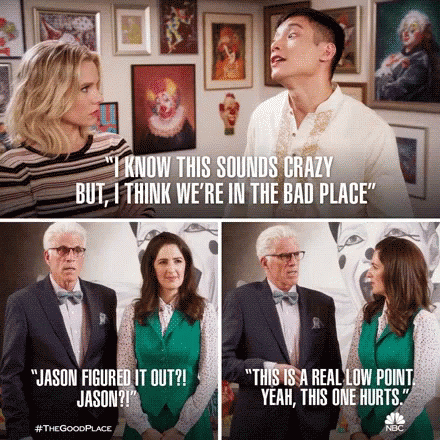

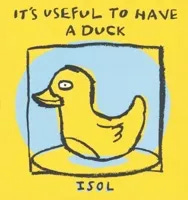

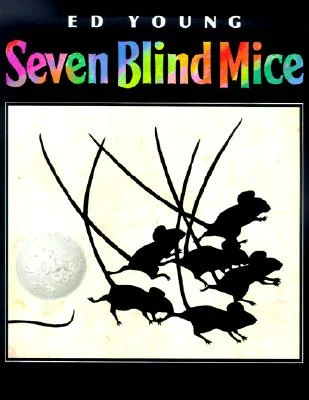
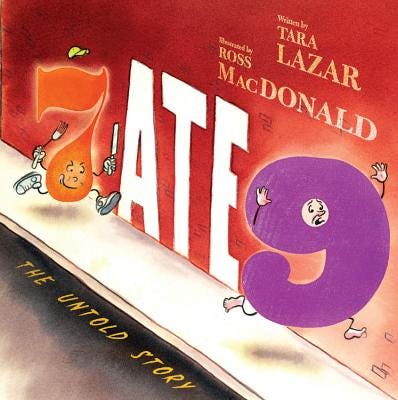
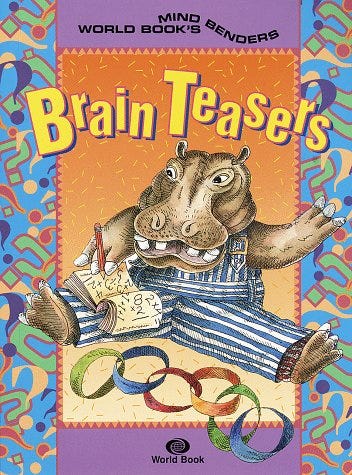
Love these recs and ways we can support critical thinking from early on.
I'm going to look for the others but 7 Ate 9 was one of my (then) 4 year old's favourite books, and still enjoyed now. I'm sure a lot of it goes over his head but I enjoy the puns! Have you read the other book where the capital letters go missing?